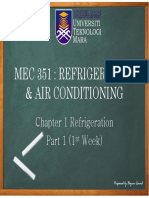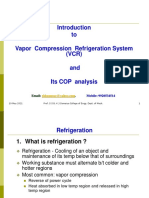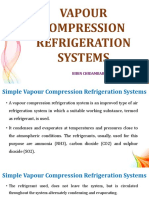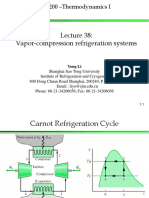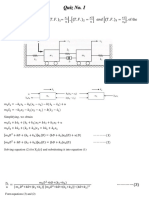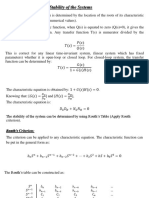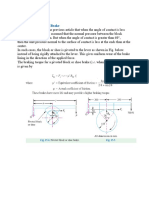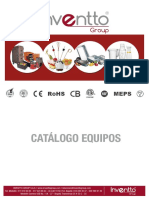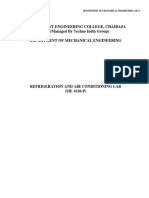0% found this document useful (0 votes)
98 views5 pagesA.C Lecture 2
This document discusses the effects of suction and discharge pressure on vapor compression refrigeration cycles. Lowering suction pressure decreases refrigeration effect and COP while increasing compressor work. Increasing discharge pressure also decreases refrigeration effect and COP while increasing compressor work. The document also discusses subcooling, superheating, liquid to suction heat exchangers, compressor isentropic efficiency, and provides two examples calculating refrigeration capacity and COP with and without a heat exchanger. It concludes with discussing actual vapor compression cycles, sources of irreversibility, and heat pump systems for both heating and cooling.
Uploaded by
mamnd tahaCopyright
© © All Rights Reserved
We take content rights seriously. If you suspect this is your content, claim it here.
Available Formats
Download as PDF, TXT or read online on Scribd
0% found this document useful (0 votes)
98 views5 pagesA.C Lecture 2
This document discusses the effects of suction and discharge pressure on vapor compression refrigeration cycles. Lowering suction pressure decreases refrigeration effect and COP while increasing compressor work. Increasing discharge pressure also decreases refrigeration effect and COP while increasing compressor work. The document also discusses subcooling, superheating, liquid to suction heat exchangers, compressor isentropic efficiency, and provides two examples calculating refrigeration capacity and COP with and without a heat exchanger. It concludes with discussing actual vapor compression cycles, sources of irreversibility, and heat pump systems for both heating and cooling.
Uploaded by
mamnd tahaCopyright
© © All Rights Reserved
We take content rights seriously. If you suspect this is your content, claim it here.
Available Formats
Download as PDF, TXT or read online on Scribd
/ 5
